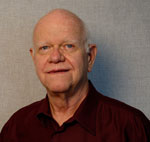
For Release: July 16, 2012
133rd AES Historical Events Track The Test Of Time
RCA Studios – Remembering Lee de Forest – Ioan Allen, Sound On Film
SAN FRANCISCO: West Coast arbiter of audio history, Bill Wray, has prepared a far-ranging Historical Program for the 133rd AES Convention set for Oct. 26–29 at the Moscone Center. “The lessons of the past remain integral components of pro audio’s on-going evolution,” remarked Convention Co-Chair Jim McTigue. “Bill Wray has always approached our Conventions with an eye towards relevance as well as variety. While today’s digital tools are generations removed from their analog antecedents, our goals for efficiency and clarity remain unchanged. This year’s Historical Program will provide our attendees with an invaluable perspective on problem solving and innovative thinking.”
133rd AES Convention Historical Events Include:
The Evolution of Electrical Recording At RCA Victor Studios 1925–1953:
Presenter, Nicholas Bergh, President, Endpoint Audio Labs – This must-see presentation explores early electric recording methodology by examining the technical evolution of RCA Victor Studios. Little documentation remains of this early era or of its relatively crude and often custom-built equipment: Cryptic technical notations in recording ledgers, brief comments in memoirs, rare photos, and decades of secondhand lore. Research for this presentation focused on alternative sources, e.g. Western Electric and RCA engineering reports, manuals for leased equipment, and modern tests of restored original equipment. Although these sources are not definitive, collectively they become quite powerful. The presentation will include images of recording equipment and rare audio clips.
Lee de Forest: The Man Who Turned Science into Art: Presenter, Mike Adams, Professor, Radio, Television, and Film, San Jose State University – After de Forest received his PhD in physics and electricity from Yale in 1899, he spent the next 30 years fashioning 19th century science into the 20th century’s popular audio media. He added sound to Marconi’s wireless telegraph to create a radiotelephone system. He added a "B" battery and earphone to Fleming’s diode vacuum tube telegraph detector to enable the detection and amplification of sound. He added a reliable synchronized sound track to Edison’s silent film, and gave birth to the talking pictures. While he didn’t profit from this innovation, his earlier invention of the three-element vacuum tube allowed amplification of audio through loudspeakers for radio and the movies, and helped create their large public audiences.
The Replay of Historical Magnetic Tape – More than Pressing the Play Button:
Presenter, Nadja Wallaszkovits, Phonogrammarchiv, Austrian Academy of Sciences, Vienna – By exploring the various process challenges related to the transfer of historical magnetic audio tapes, this program will focus on the digitization of early audio collections. Issues covered include stages of preservation, conditions, handling, and reproduction of important original tapes. In a related program,
Old Fables About Magnetic Recording Theory: Presenters, Jay Mcknight and Jeff McKnight – This event will highlight some meaningful developments you may have missed over the past 60 years. These include: The story of the "effective" gap length of a reproducing head. And, a correction to Westmijze’s Gap Loss Theory; Who really discovered AC Bias? How does it actually work? And, who were the 4 groups that re-discovered it circa 1940?
The Egg Show: A Demonstration of the Artistic Uses of Sound on Film: Presenter, Ioan Allen, Senior Vice President, Dolby Laboratories – With pictures of eggs ingeniously illustrating his points, and an array of 35mm clips (replete with scratchy leader and still perfect sound), Mr. Allen describes innovative mixing and editing techniques developed over the years. Attendees will see how film sound mixers highlight a conversation in a crowd scene, how they inter-cut music to film, and how they create artificial effects that sound more real on film than on live recordings. This event will be held at Dolby Laboratories’ Theater. A limited number of $10 tickets will be available exclusively to registered convention attendees at the tours counter in the main lobby at Moscone. In addition to an Oscar, and a Samuel L. Warner Award for contributions to motion picture sound, Ioan Allen has earned Scientific and Engineering Awards from the Academy of Motion Picture Arts and Sciences. An AES Fellow, and recipient of the AES Silver Medal, he spearheaded breakthrough film audio formats which have revolutionized the film sound experience.
"And, though not a historical event," Bill Wray adds, "I strongly recommend this Scott Hull tutorial, to interested attendees. The growing resurgence of vinyl makes this previously historical subject surprisingly relevant."
Mastering For Vinyl – Today's Challenges: Presenter, Scott Hull, Mastering Engineer, Masterdisk – In the last few years there has been a renewed interest in producing vinyl records. What are the considerations for mixing and mastering your music for vinyl? A leading mastering engineer for nearly thirty years, Hull will dig into quality control issues and discuss ways to get great sound on your first pressing.
“We are extremely fortunate to have a genuine audio pioneer serving as our Historical Committee Chair,” said Committee co-chair Valerie Tyler. “Bill Wray is one of the most knowledgeable and enthusiastic members of our team. He is an inspiration to all of us.”
Photo: 133rd AEC Convention Historical Chair Bill Wray
###
The Audio Engineering Society was formed in 1948 by a group of concerned audio engineers. The AES counts over 14,000 members throughout the U.S., Latin America, Europe, Japan and the Far East. The organization serves as the pivotal force in the exchange and dissemination of technical information for the industry. For additional information visit http://www.aes.org


